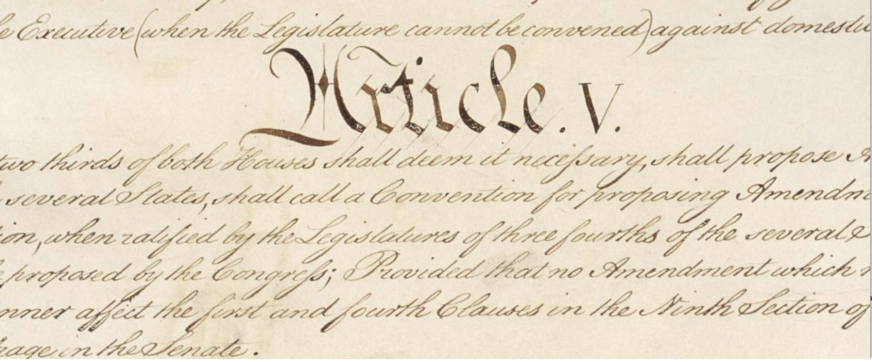There can be no disagreement that the executive branch has been a whirlwind of activity since President Donald Trump took office. There has been more activity with this new administration than any I can recall within my lifetime (I am 70 years old).
Most people have strong opinions regarding what is taking place. I would like to ask you to honestly answer this question… “Do you like what is going on in Washington D.C., with President Trump, DOGE, and the new Cabinet?”
Your response may be a strong YES or a strong NO or maybe a Yes and No because you like some things, but not others, or because you like the results but not the techniques being employed to get them.
What about Congress? Are they doing their job?
How is the Federal Judicial System doing? Are they partisan or unbiased? Are they helping or just adding more confusion to the situation?
The framers of our Constitution understood how power can have a corrupting influence and can lead to tyranny. That is precisely why they laid out the structure of our government the way they did.
First, our national government was to be based on Federalism, where States and the Federal government worked in partnership. The Federal government was to have a limited number of enumerated powers (Article I, Section 8), things that the States could not do effectively, that required the unanimity of all.
All other powers not granted to the Federal government were to be under the control of the individual States.
Secondly, we were to have three independent branches of Government at both the State and Federal levels, consisting of a Legislative branch, an Executive branch, and a Judicial branch. Each branch was to have specific roles so that they could keep each other in check.
· The primary responsibility of the Legislative branch or Congress (House and Senate) was to make laws and carry out the enumerated powers.
· The primary responsibility of the Executive branch or the President was to enforce those laws, be the Commander-in-Chief of the armed forces, and manage international relations.
· The primary responsibility of the Judicial branch or Federal Courts was to uphold the Constitution as well as the laws and treaties of the United States, with equity when disputes or conflicts arose.
That was then.
What the framers did not foresee was the growth of what has become a “fourth branch” of government: the unelected Administrative State has become the largest branch and has the greatest day-to-day impact on individual citizens.
The Administrative State now boasts 430 departments and agencies (“Offices” per the Constitution) and spent over $67,000,000,000,000 in 2024. (Source: https://www.federalpay.org/departments)
The Administrative State has more than two million federal employees located in over 16,000 offices. These unelected bureaucrats are supposed to serve the people of the United States, but “We the People” have no direct control over them. (Source: Work | DOGE: Department of Government Efficiency https://www.doge.gov/workforce)
The 400-plus departments and agencies within the Administrative State have a fair amount of autonomy and may or may not be following the charter under which they were established. As a result, the Administrative State creates, on average, about 20 rules for every law that Congress passes. These regulations have the force of law and impact every aspect of our lives. (Source: Work | DOGE: Department of Government Efficiency https://www.doge.gov/regiations)
No one is even aware of how many Federal regulations they break each day. Consider the IRS alone the next time you attempt to calculate your taxes according to the current rules without the help of a professional.
Who controls this behemoth called the Administrative State?
According to the government’s organizational chart, most Departments and Agencies fall under the Executive Branch per Article II, Section 2 of the US Constitution. Congress has some oversight responsibilities depending upon the law under which the Office was created, however, Congress may or may not exercise this responsibility. (Source: The United States Government Manual from the GSA ReadLibraryItem.ashx)
Under some circumstances, the President is also given authority to divide, consolidate, abolish, or create agencies of the U.S. federal government by executive order. This is why we currently see so much confusion and turmoil within our Federal Government. The control of the Administrative State has become a national dilemma.
The new administration is pushing the envelope with President Trump using his Executive Powers to the fullest extent possible to see what he can get done to reduce the bureaucracy.
However, the President’s actions are only temporary and can be easily overridden by the next change in Administration. Who constitutionally controls the Administrative State will be determined in the courts (Federal Judiciary), which will be an arduous process, and the outcome is still unclear.
Instead, we should have a common-sense process for how to monitor, manage, and control the Administrative State.
Good News!
Our Founders provided a solution to this dilemma in Article V of the Constitution.
Article V describes the constitutional amendment process. It consists of two options for proposing amendments and two options for ratifying the proposed amendments.
The first option has been used 27 times in our history, including our Bill of Rights (the first 10 amendments), women’s right to vote, abolition of slavery, and presidential term limits, to name a few. In these instances, two-thirds of Congress (both the House and the Senate) propose an amendment, which is then sent to the States for ratification. Once three-quarters of the States ratify a proposed amendment, it is adopted as part of the Constitution and can only be changed by the amendment process.
In the waning days of the Constitutional Convention of 1787, George Mason, a delegate from Virginia, realized that there wasn’t a provision in the Constitution for the States to rein in the Federal government, should it become too large, too powerful, or tyrannical. So, he proposed, without objection, that a second means of proposing amendments to the Constitution be included.
This was for two-thirds of the States to petition Congress to call a “convention of the states” to propose specific amendments to the Constitution. Any amendment that is proposed and passed out of the convention is then sent to the States for ratification. Again, three-quarters of the states must pass the amendment before it becomes part of the Constitution.
This second option, allowing the States to propose amendments, was passed unanimously and thus became part of our Constitution.
There is currently a non-partisan grassroots organization called “Convention of States Action” (COSA) that is working to call a convention to propose amendments for:
1) Limiting Federal Overreach (the Administrative State),
2) Fiscal Restraint (reigning in the national debt) and
3) Term Limits (for Federal officials, including Congress).
COSA is the largest grassroots organization in the nation with over five million supporters and a quarter million volunteers. Hundreds of petitions requesting a call for a Convention of the States have been sent to every State legislative district in our nation.
Two-thirds of 50 states equals 34. So far, 19 of the 34 states required have petitioned Congress to call a Convention of the States. We are more than halfway there, with several states currently working on legislation.
Convention of States offers the only permanent solution to our National Dilemma. If you would like to learn more about this movement or sign a petition supporting a convention, visit https://conventionofstates.com/michigan.
Written by John H. Phillips, Regional Captain for COS/Michigan






